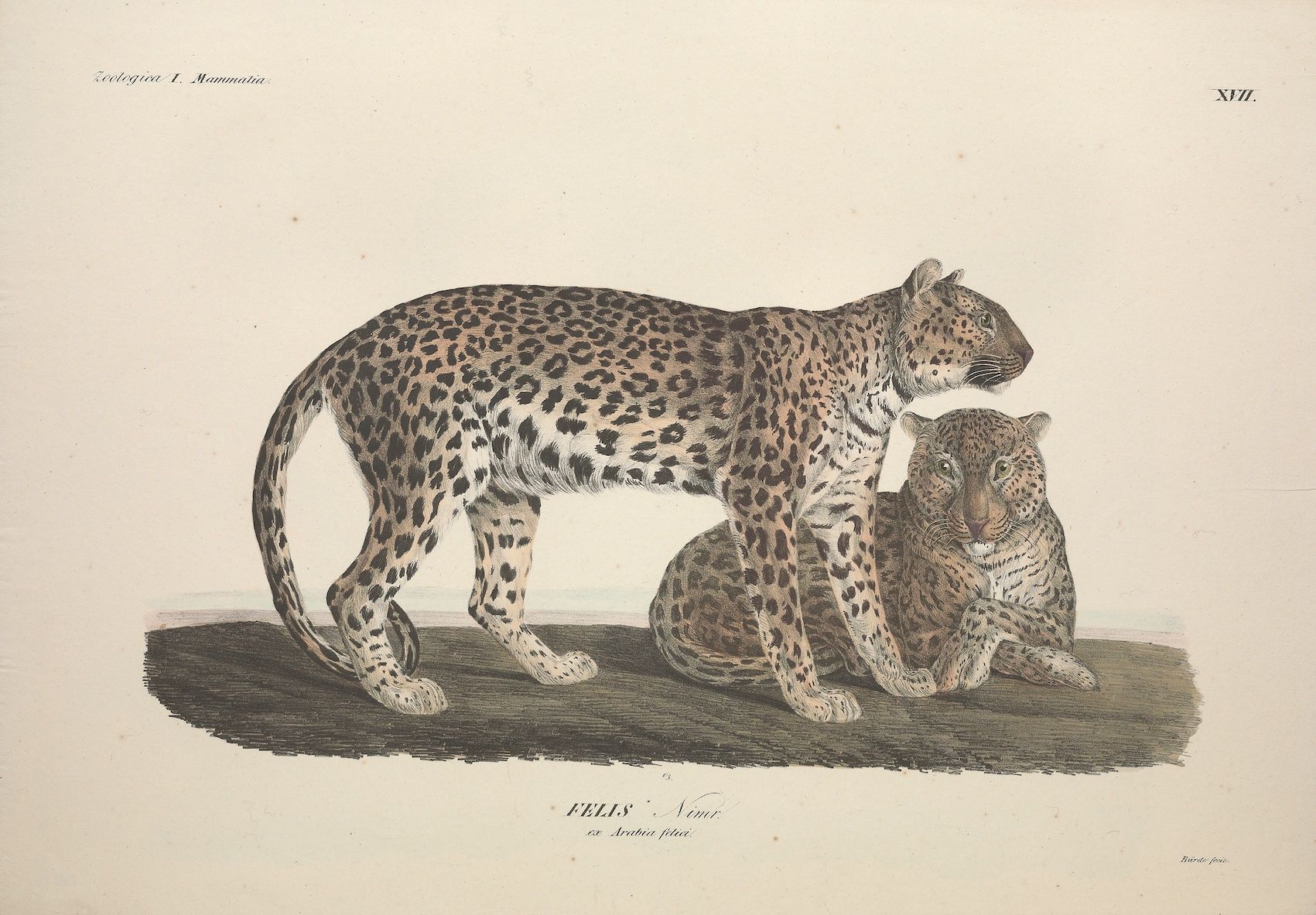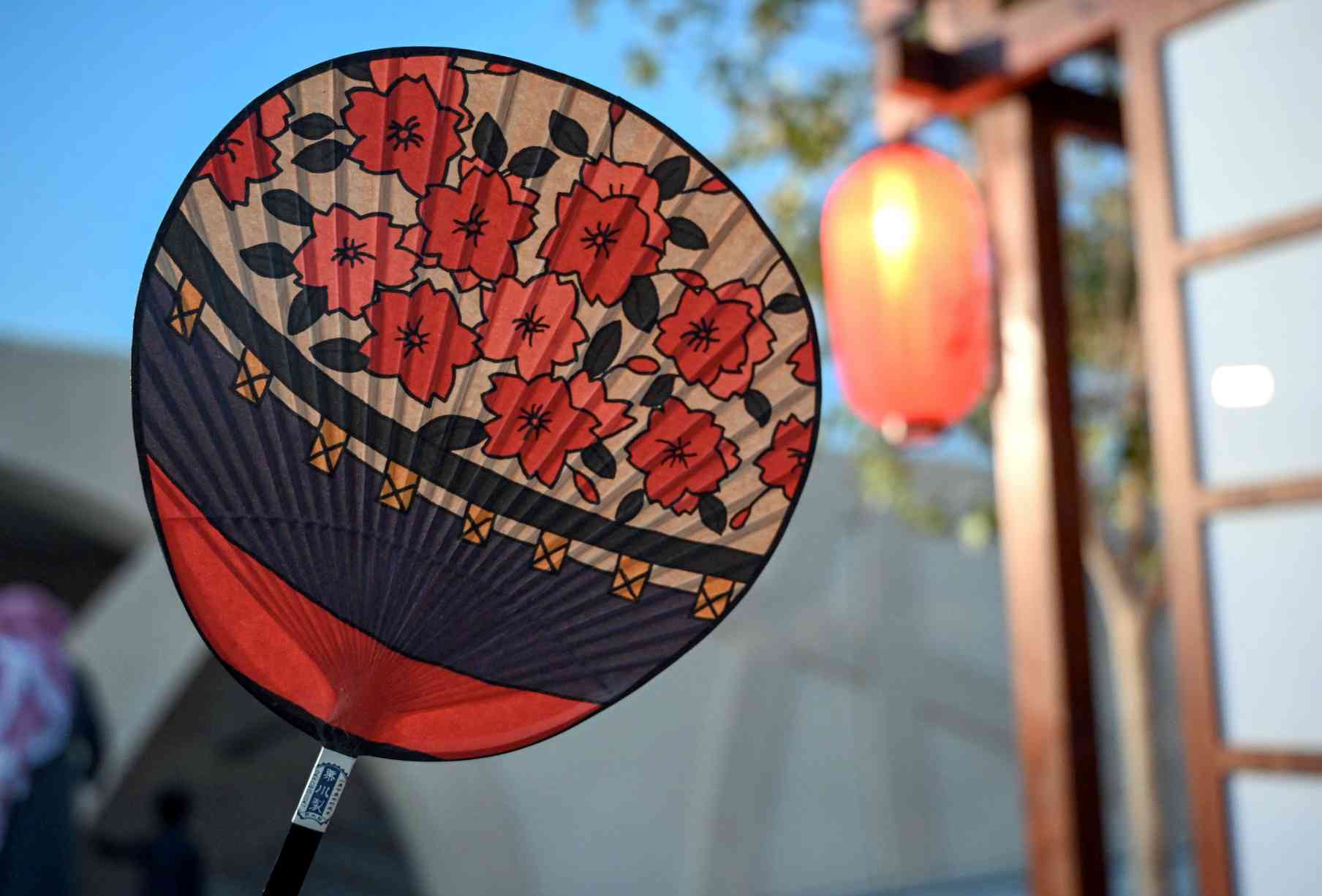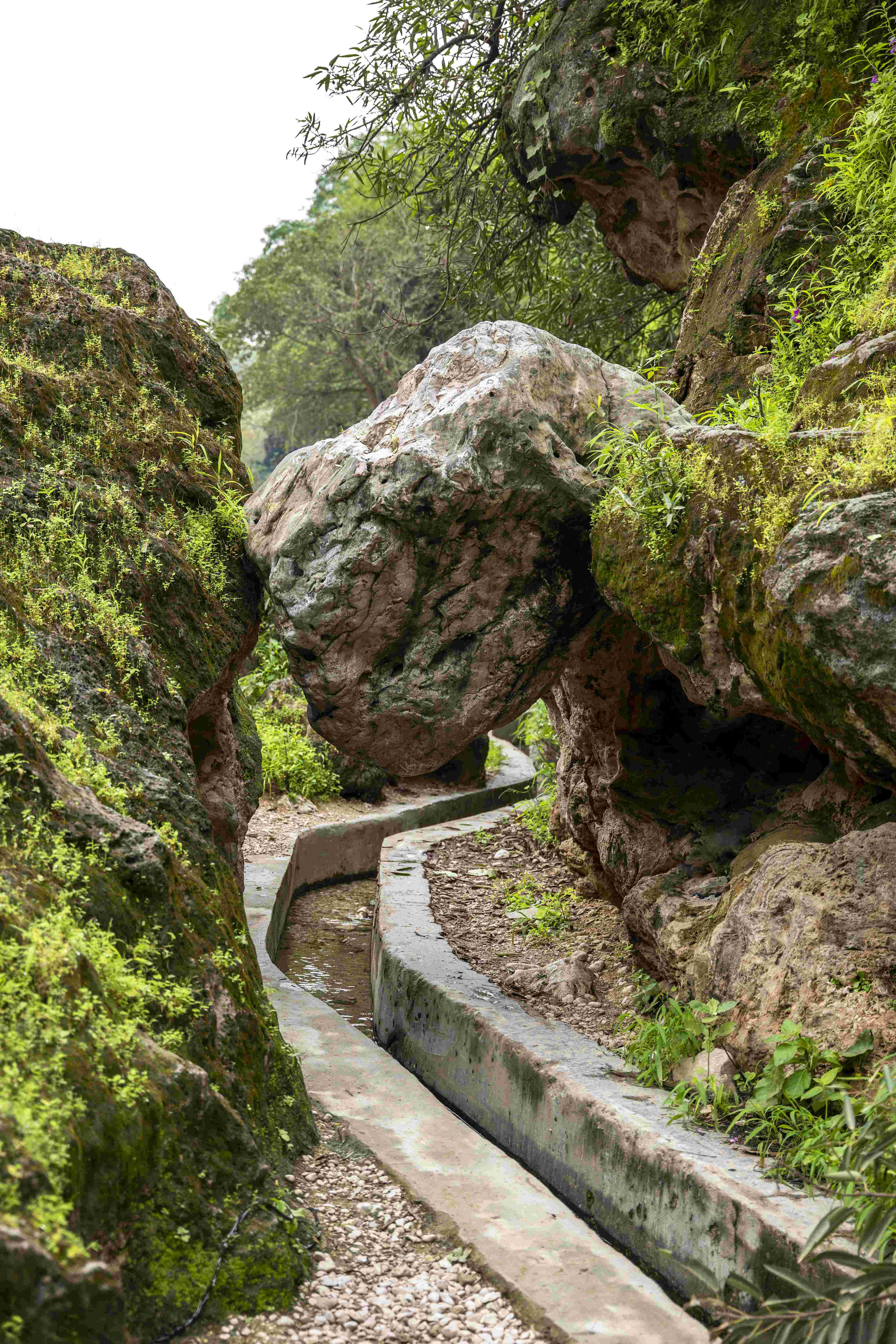Where Red Sands and Animals Roam — Shaybah Canvas
A family of Red Neck Ostriches — five new baby ostriches. Shaybah Wildlife Sanctuary. Photo by Rym Al-Ghazal.
Nature paints an impressive and intricate canvas of life and living beings in the Rub’ Al- Khali, which may be called the ‘Empty Quarter’, even though it is anything but empty.
Against the impressive backdrop of Shaybah’s silky reddish sand dunes, there are fresh tiny and wobbly two-toed footprints on the sand that mark new hope for nature.
Unaware of their importance in the national drive for conservation and revival of native species to the Rub’ Al-Khali, five baby ostriches are playfully tugging away at shrubs and kicking about some sand under the watchful eyes of their towering mother.
Their even taller and more imposing father is at least 280 centimeters high (9.1 feet), with a bright red neck that aptly represents its moniker of Red Neck Ostrich. Known as a naeama in Arabic, the father will continue to stroll by, acting nonchalant, all the while guarding the perimeters of the area where his feathery family wander about.
Weighing 100 to 160 kg, and able to run up to 70 kph, this is the largest bird on Earth. It is also the African relative of the Arabian ostrich that unfortunately became extinct more than 70 years ago in the Arabian Gulf.
The re-introduction of the African red-neck ostrich, the closest species to the Arabian — such as this new family of five offspring — is helping revive the presence of these giant birds across the Rub’ Al-Khali again.
“It is quite a milestone to have all five chicks survive; a true celebration,” said Gregory Simkins, the conservation specialist at the Shaybah Wildlife Sanctuary. These ostriches, together with the majestic Arabian Oryx, the graceful Arabian Sand Gazelle regularly praised in Arabic poems, the slithering Arabian Toad-headed Agamid Lizard, the regal Golden Eagle, the unassuming MacQueen’s Bustard, the hopping Cape Hare, the agile Arabian Sand Fox (or The Ruppell’s Fox), and the stealthy Arabian Sand Cat; these are all just some of the protected species from over 217 species within a 637 square kilometer protected area within the vast Rub’ Al-Khali.
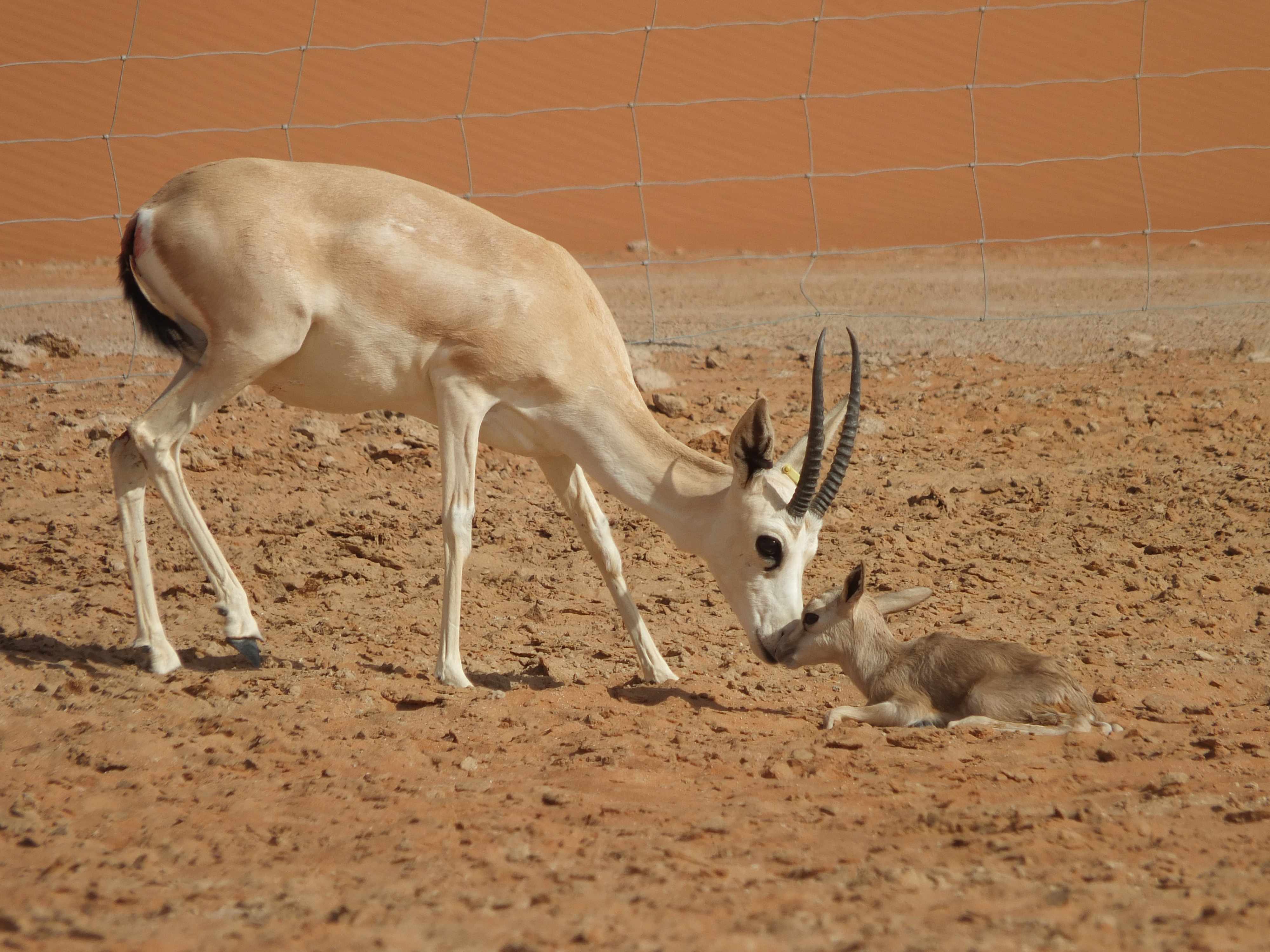
Photo credit Shaybah Wildlife Sanctuary.
Opened in 2016, the Shaybah Wildlife Sanctuary area has been restored to its natural state by preventing key threatening processes such as off-road driving, hunting, grazing by camels, and firewood collection. “Because this area is protected from human activities and grazing, its biodiversity is able to thrive and and we can observe and learn more about the different species being bred and taken care of here, and learn more about the delicate roles of species in the ecosystem,” said Simkins, who has worked in this field of conservation for 25 years.
“Because this area is protected from human activities and grazing, its biodiversity is able to thrive and and we can observe and learn more about the different species being bred and taken care of here, and learn more about the delicate roles of species in the ecosystem,” said Simkins, who has worked in this field of conservation for 25 years.
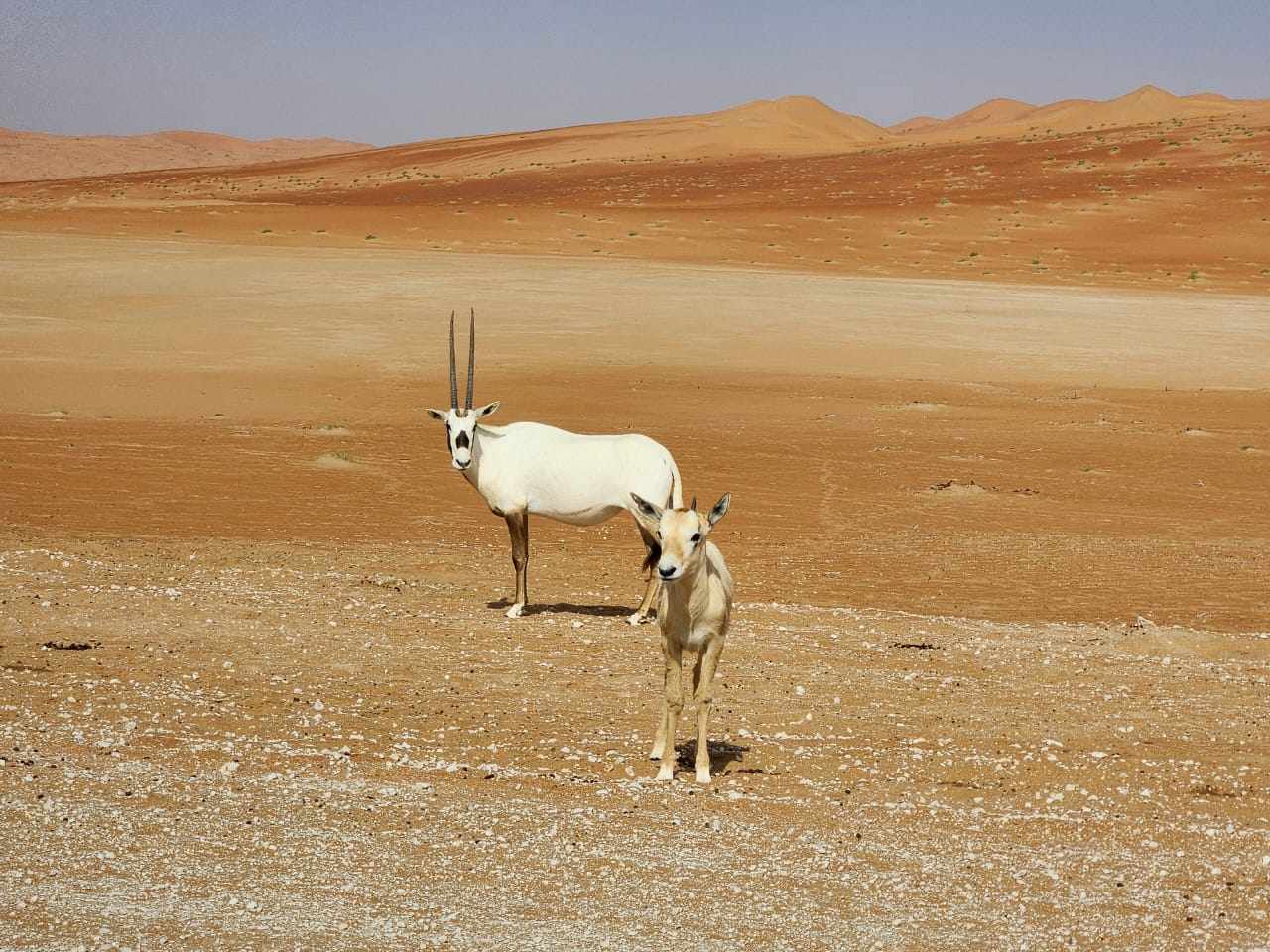
A family affair — baby Arabian Oryx with mother at the Shaybah Wildlife Sanctuary. The young are browner in color to help them with camouflage against the desert sands. Photo by Rym Al-Ghazal.
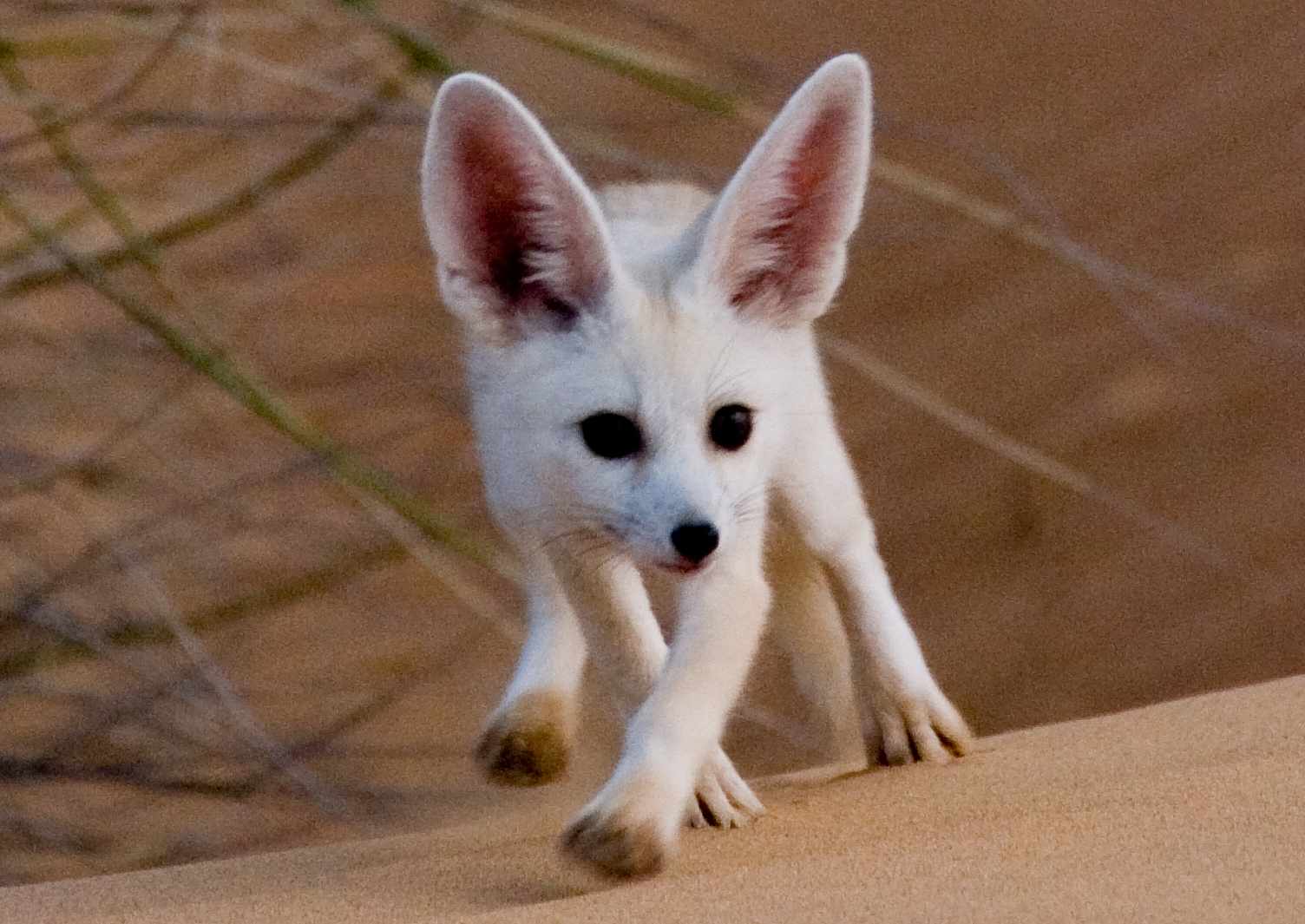
A young Arabian Sand Fox at Shaybah Wildlife Sanctuary. Photo credit Shaybah Wildlife Sanctuary.
The Ithraeyat editorial team traveled south from Dhahran to Shaybah — located in the northern part of Rub’ Al-Khali and ten kilometers south of the Abu Dhabi border — and went on a special field visit with Simkins to experience the silence of the sands, the awe of viewing the animals in their natural habitat and the overall balance and tranquility the natural reserve inspires.
“We conduct research and monitor the animals we release to make sure they are well and we learn more about their lives,” said Simkins. “The camera traps we have set up across the reserve help us see what animals and birds come out at night and what we may miss during the day. For instance, we have seen the elusive Arabian Sand Cats wander about at night,” he said.
As cute as they look, the Arabian Sand Cats, with their sandy to light gray fur,are well camouflaged in the desert environment. Their ears set low on the sides of the head help them sense prey moving underground. They may be small, at 39 to 52 centimeters in length and weighing between 1 to 3 Kilograms, but they are known to kill strong venomous snakes.
The reserve, one of 14 protected areas by Aramco, is a vast stretch of fenced land — with a special designed net to prevent animals like the sand cat from getting stuck —and is home also to 11 plant species including the desert hyacinth (Cistanche Tubulosa) — a favorite food of the Arabian Oryx as well as known as a medicinal herb in Chinese medicine said to aid memory and immunity.
Another lovely plant that blooms with yellow flowers is the Tribulus Pentandrus, a favorite treat for camels, and one that brings a blanket of floral beauty to the desert terrain.
Insects also play an important role, with ants for instance often found around these plants to help disperse their seeds. “It is still a mystery what the loss of a species does to the bigger picture, as there could be subtle changes we are unaware of, with great consequences to nature and to our world,” said Simkins.
“So every species matters, no matter how tiny.”
From the migratory birds and the insects flying by to the curious oryx peeking over at us from behind a shelter as we were leaving, we drove carefully past small twin baby gazelles wagging their tails as they hopped away closer to their family. It has been a truly magical visit filled with the mesmerizing pulse of nature and its species.
More photos from Shaybah Wildlife Sanctuary:
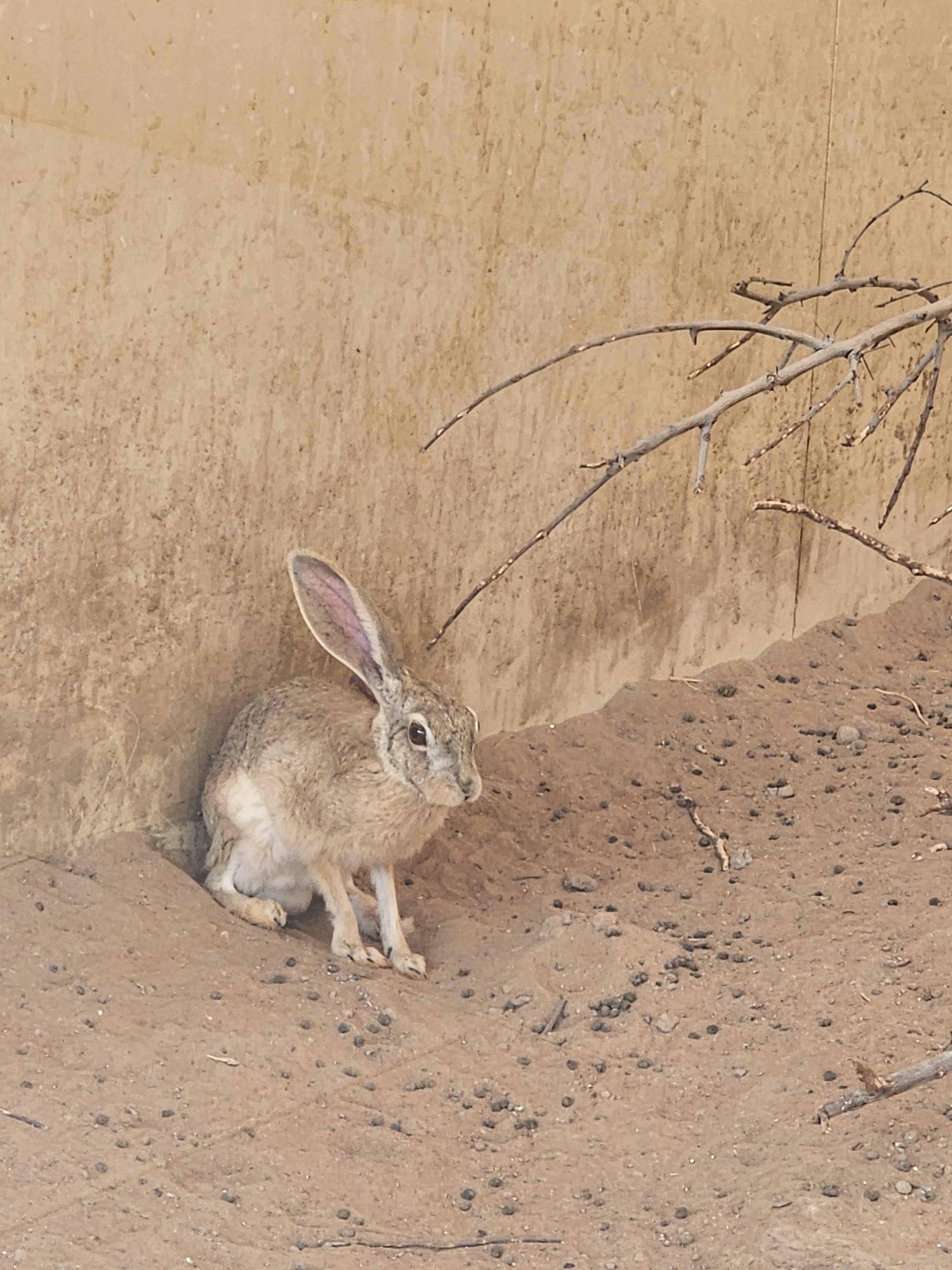
Cape Hare at Shaybah Wildlife Sanctuary.
Photo by Rym Al-Ghazal.
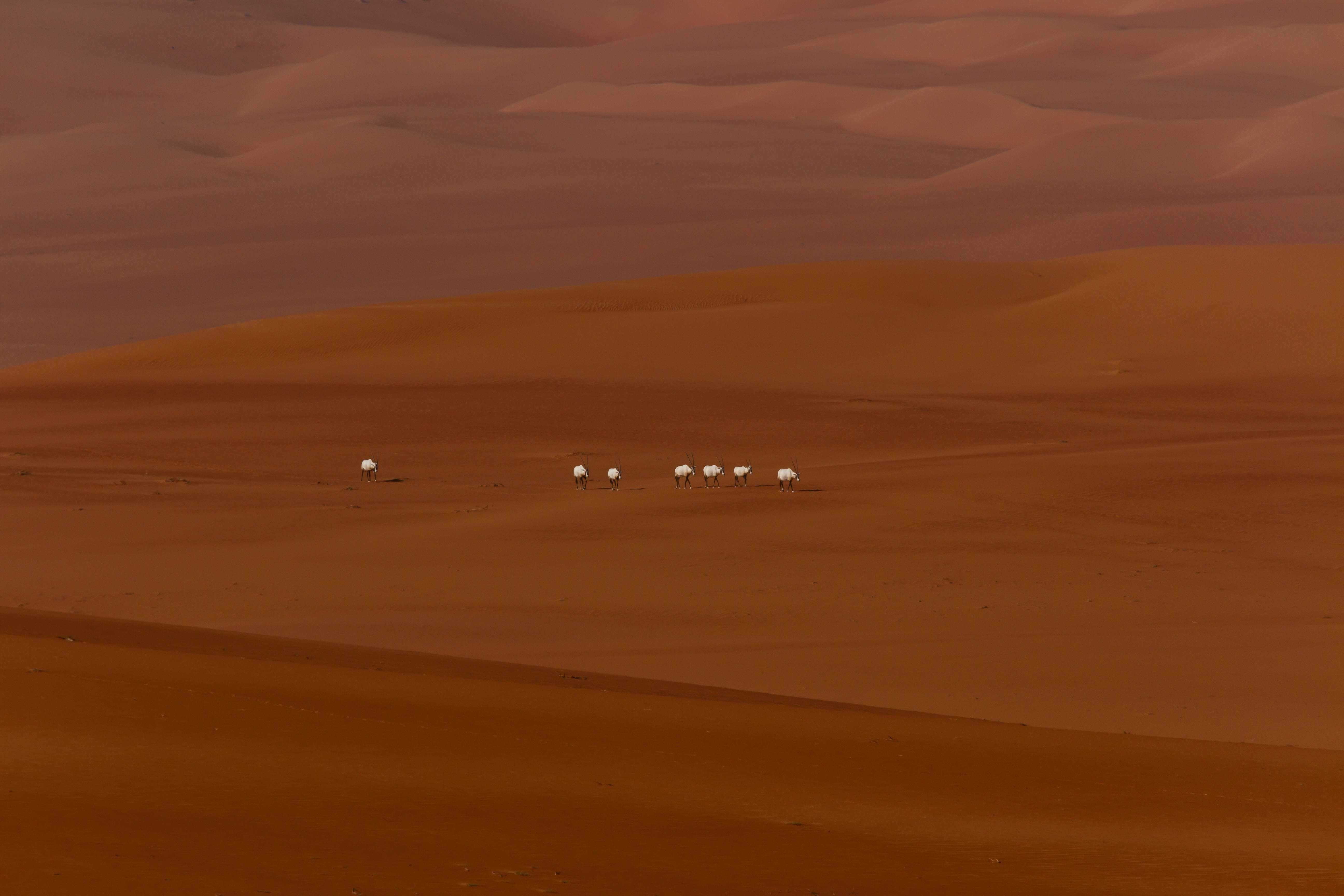
The unique red sands of Shaybah. A herd of Arabian oryx wander about.
Photo credit Shaybah Wildlife Sanctuary (Gregory Simkins)
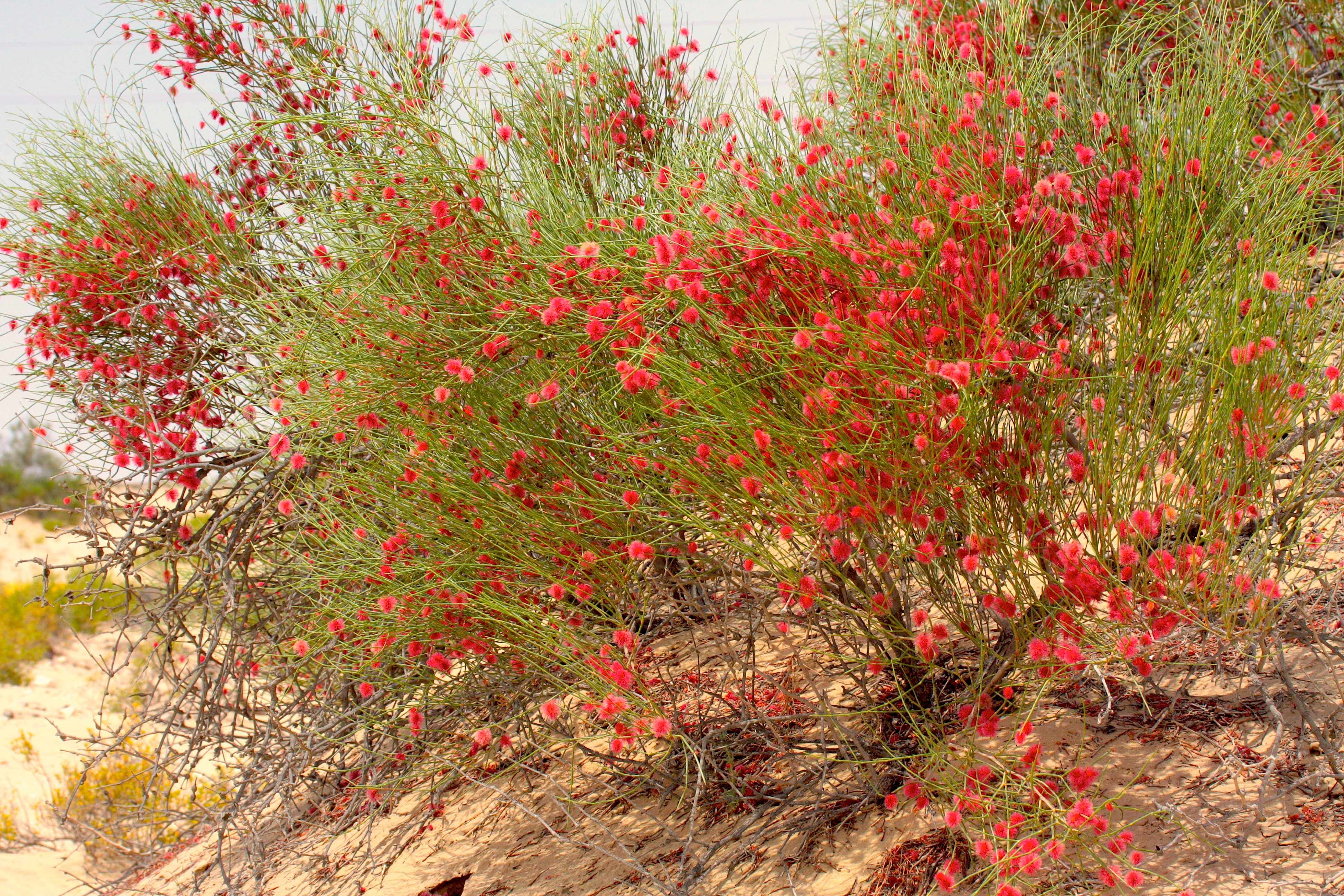
Over 11 plant species found at Shaybah Wildlife Sanctuary. Calligonum crinitum.
Photo from Shaybah Wild Sanctuary.
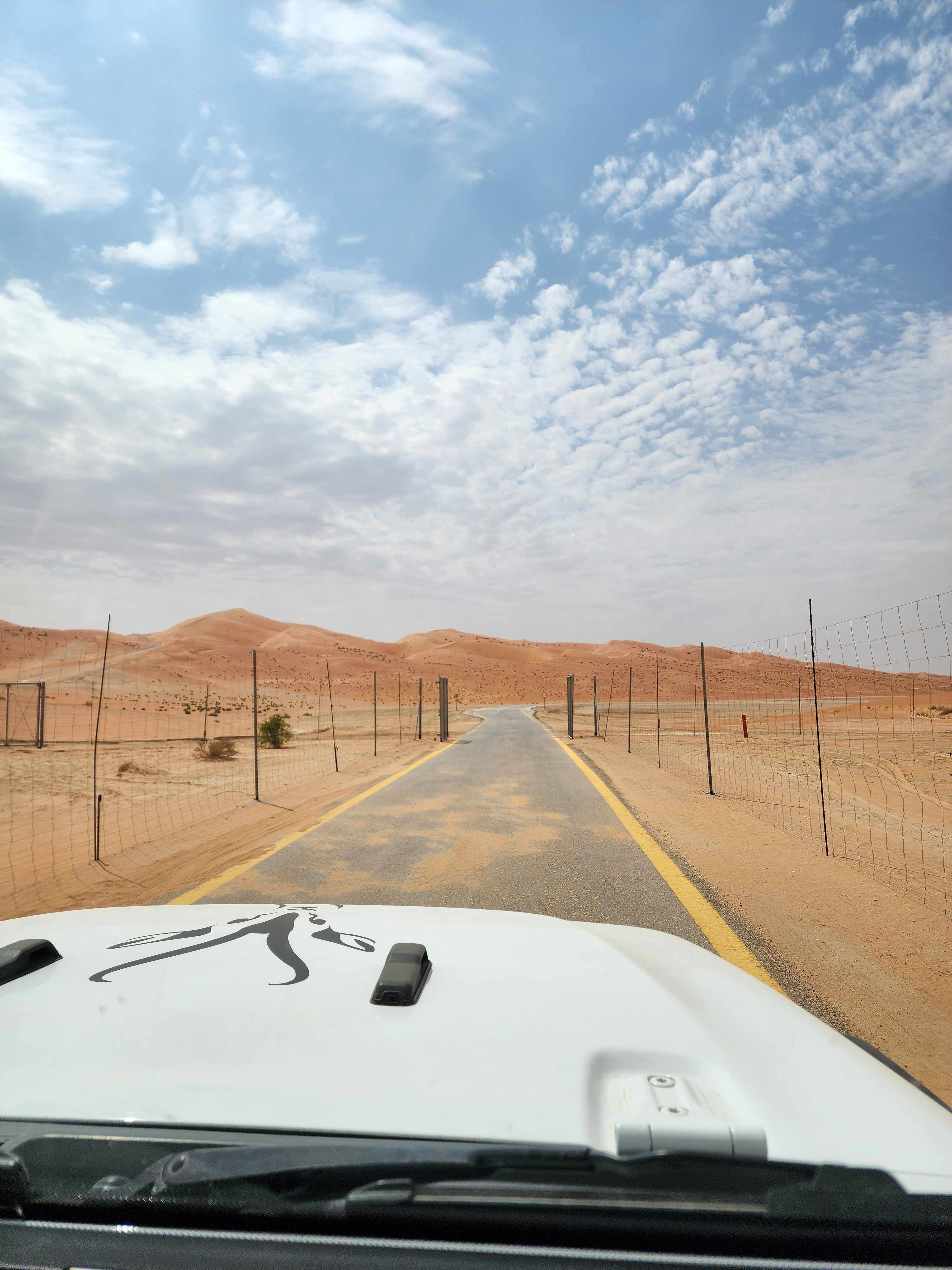
Ithraeyat editorial team roadtrip in Shaybah Wildlife Sanctuary.
Photo by Rym Al-Ghazal.

Gregory Simkins, conservation expert at Shaybah Wildlife Sanctuary.
Photo by Rym Al- Ghazal.
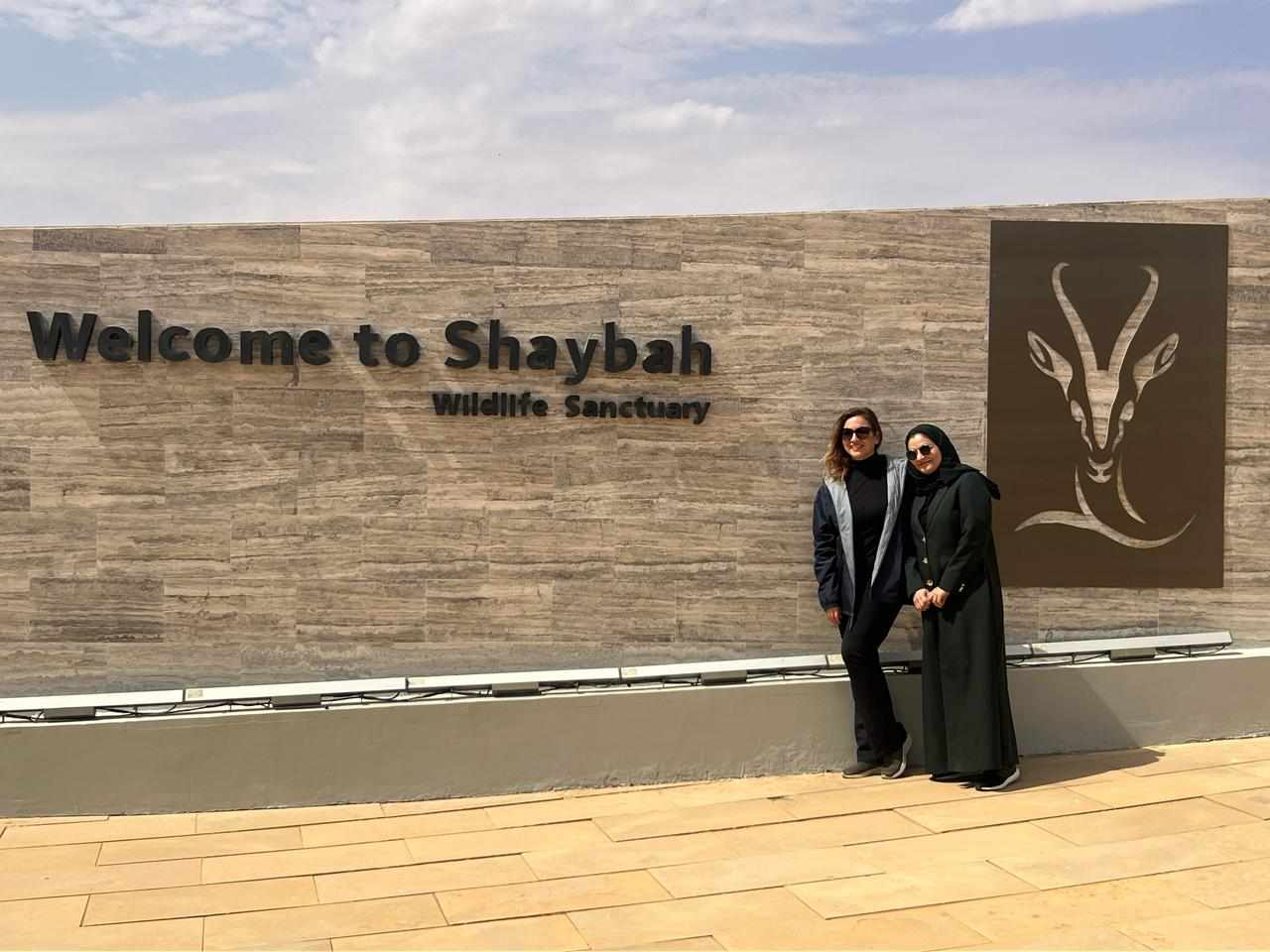
Ithraeyat editorial team roadtrip in Shaybah Wildlife Sanctuary.
Photo by Gregory Simkins.
